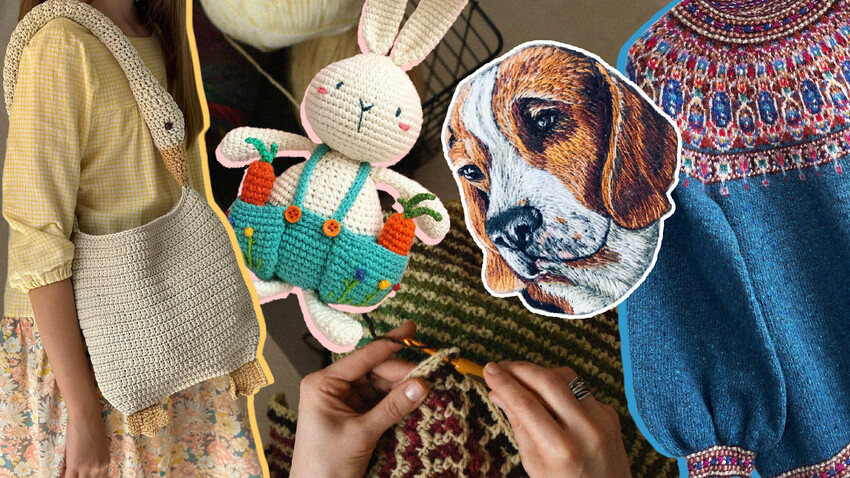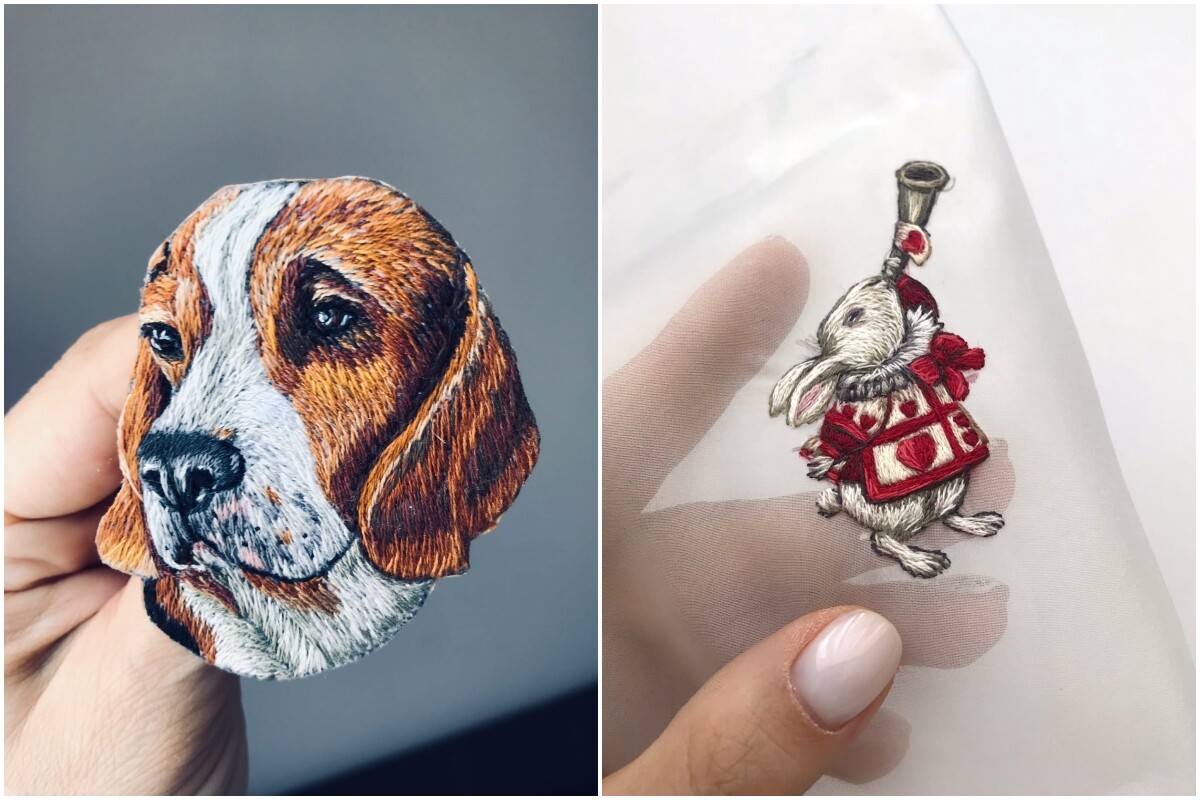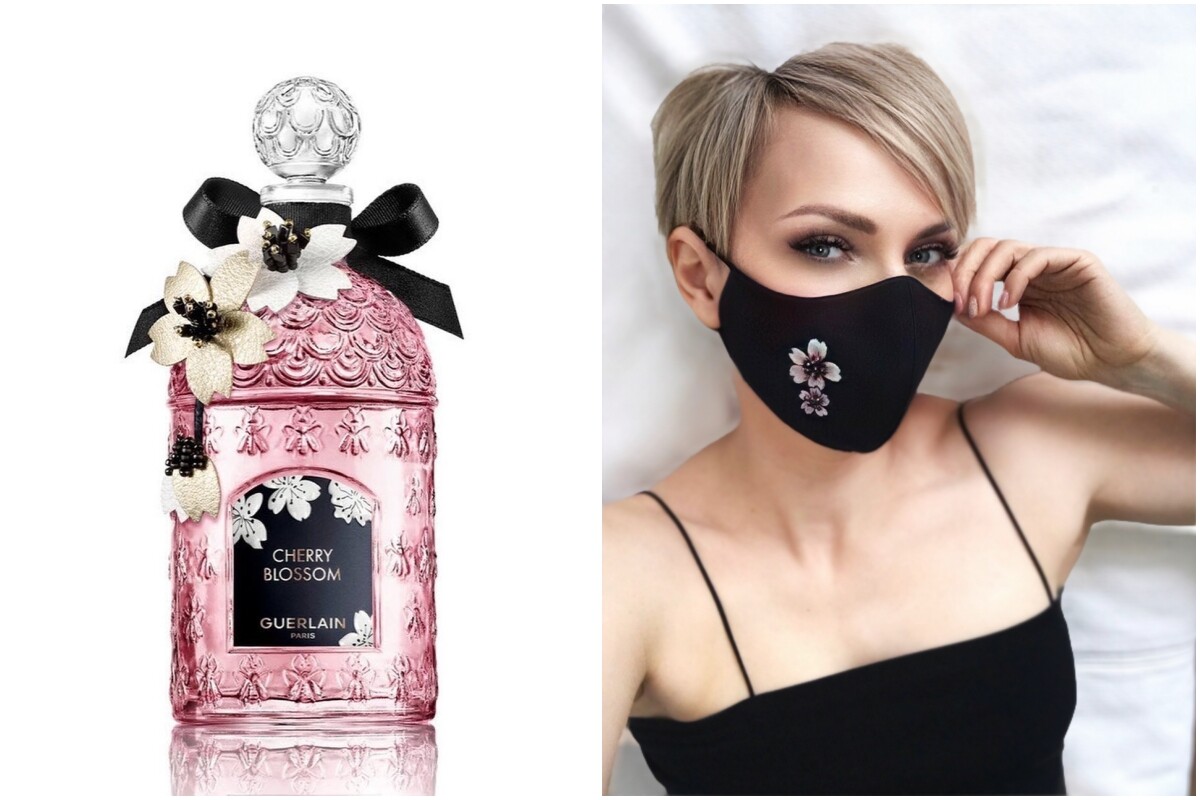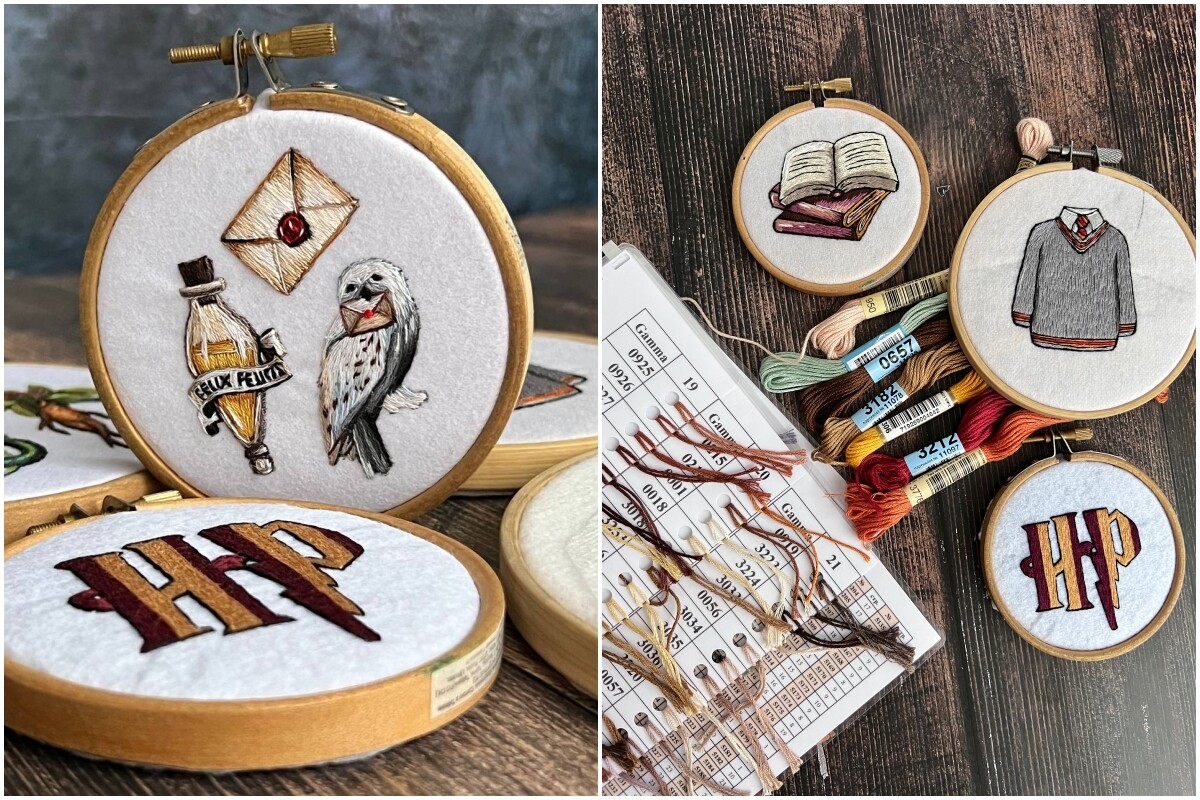
Everyone in Russia probably has a pair of warm socks lovingly knitted by their grandmother. And some also have knitted jumpers, scarves, hats or mittens. Frequently, children and teenagers today refuse to wear these itchy and rather crudely designed items. But at a time of serious shortages in the Soviet era and during Perestroika, it was sometimes the only way to keep warm in winter.
Nowadays, the world of handicrafts, such as needlework, has changed dramatically - they’re no longer just a craft, but a real art form. In addition, many men have also joined in.
Let's take a look at some of the items made by talented handicraft women (and men).

Svetlana Panina and her works
Svetlana PaninaBrooches and collars with images of animals or flowers, Christmas tree decorations, and earrings – Svetlana and Ksenia embroider all these items using the satin stitch technique and they’ve already taught over 5,000 other women how it's done.
Svetlana has been doing cross stitch embroidery since she was a child. As a little girl in Soviet times, she went on holiday with her parents to the Carpathian Mountains (Western Ukraine) and was fascinated to see a Hungarian old woman embroidering a traditional towel. She taught Svetlana embroidery. Since then embroidery has helped her cope in the most difficult of times, literally helping her to survive and forget gloomy thoughts.

Portraits of pets and animals
Svetlana PaninaAt some point the young woman felt too constrained by cross stitch embroidery – a technique in which the skilled embroiderer depends too much on the ready-made designs and the fabric base. But satin stitch embroidery provides an opportunity for a real leap of creativity and imagination. Svetlana began to embroider animals and make portraits of pets to order, and, for some reason, they were often bunnies.
"At some point I got tired of replicating the same embroidery articles and I thought: Everyone should learn how to embroider these themselves," Svetlana says. So the idea of master classes was born and the "Tvori" ("Create") school of embroidery came into being.
In 2019, Svetlana joined forces with portraitist Ksenia Gromova, who embroiders not just animals but also portraits of famous people in satin stitch.

Works for Guerlain
Tvori ('Create') studioNow they make things together, as well as running embroidery courses and writing books. They have even fulfilled an order for the House of Guerlain: During the pandemic, they embroidered flowers on face masks for the company, as well as brooches with lilies-of-the-valley for a limited edition fragrance.

Harry Potter style embroidery
Tvori ('Create') studioThe embroiderers have recently published the book Embroidery School for Harry Potter Fans (Eksmo, 2023), with 28 satin stitch embroidery ideas from the Harry Potter universe.
Andreihas a knack for smashing stereotypes, proving that men can also do knitting. The "designitter" (i.e. designer knitter) as he calls himself, has over one million subscribers on social media. Nowadays, the former software specialist writes books about knitting and teaches needlecraft to his followers. He was taught knitting by his wife Tanya, who is also a popular blogger and needlecrafter.
Andrei knits macho scarves and very masculine cardigans; to be more precise - really chunky cardigans. And Kurochkin's most famous product is the "Brother's sweater" in the style of Danila Bagrov from the cult movie “Brother”. The cover of his new book about knitting, The Legendary Brother's Sweater (Bombora, 2023), carries the slogan "Strength is in the yarn" – which is a play on the phrase "Strength is in Truth" that’s famously used by the film's protagonist Danila (the Russian words for "truth" and "yarn" start with the same letters).
Natela is a real knitting virtuoso, and even more, this talent runs in the family. Her grandmother from Orenburg knitted the down-hair shawls that the region is famous for. Natela has been engaged in creative pursuits and painting from a young age and has a degree in Art. Now she knits luxurious cardigans, caftans, hats, gloves and other warm and cozy articles.
Her work doesn't come cheap - the price of some of her jumpers can be as high as several tens of thousands of rubles (several hundred euros). Natela gave up her main job recently and started devoting herself to her hobby full time. As a knitting expert, she believes that creative activity can make people happy and helps them to cope with even the most difficult of times.
As it happens, Natela's husband, Kirill Astakhov, has also got involved in knitting, and his toadstool designs have already taken social media by storm.
Before opening her school of paper cord weaving, Polina worked in the police. She got into paper cord weaving while on maternity leave in 2015: Finding a bundle of old newspapers in a shed, she felt it was a pity to throw them away. Google came to the rescue and, before she knew it, Polina was taking her first steps: Baskets, bags and then whole trunks, chests of drawers, tables, a wide variety of decorative objects for the house and other accessories magically began to emerge out of ordinary newsprint paper.
These days Polina has more than 150,000 subscribers, and she has already instructed more than a thousand fellow craft enthusiasts, helping many to turn their hobby into a business. Polina even converted her husband, also a former policeman, to the handicraft movement, and now he weaves his own trunks and furniture items.
Elena Skripina has more than 10,000 subscribers on social media, and they are attentive followers of her crocheting video lessons. Elena is a practitioner of contemporary lace-style needlework. Her designer doilies with raised patterns have taken the world of needlecraft enthusiasts by storm, and she has even written a teaching manual on how to make them, complete with instructions and diagrams.
In addition, Elena has written a complete reference guide to decorating needlework items with the crochet needle. Titled Ideal Edging, this guide not only offers advice but also helps to precisely calculate the mathematical formula for edging an article.
Julia is the author of the book The Needlework House, as well as several other bestselling books about needlework. She has already gone round the whole house with her crochet hook, turning every project into a fun piece of interior decor. Cushions, throws and rugs - she uses her hook to craft cozy geometry and genuine poetry out of mosaic crochet work.
Julia teaches needlework - she even shoots video lessons for needlework with children. As a mother herself, she understands how important it is to get them involved in a hobby. Julia has also set up a whole club of fellow enthusiasts - they crochet together and compare ideas.
Marina Gorshtein is a seasoned designer who has worked skilfully with both knitting needles and the crochet hook. Six years ago she thought up a challenge for herself - to make shawls but to present them with a modern flare so that they stop being seen as "granny wear", and instead become a fashionable accessory straight from the catwalk.
Nature itself inspires Marina for her lace-style needlework shawls -- the forests of Siberia, the River Katun in the Altai and the silk of meadow grasses. More than 3,000 women have already learned to make triangular, semicircular and other complex shawls with Marina. And she has collected her best work in a teaching guide, The Art of Knitting a Shawl.
Many generations of needle crafters in Russia have used left-over pieces of fabric to make bedspreads. Thousands of small pieces are put together to form a single composition.
Patchwork has become a highly popular occupation and a real art form. Anna Klimova has been teaching it to interested people for 10 years now, continuing a family tradition.
"Craftspeople don't use scraps of left-over fabric these days - there are special patchwork textiles," Anna says. "A patchwork composition can be a real masterpiece to be passed down in the family like an heirloom."
Cute bags, rucksacks, baskets, cushions, poufs and rugs - it turns out that all these can be knitted from… string! And in a way that is remarkably stylish! "Knitted items can give any room a particularly cozy and snug feel," says Oksana.
She has been a fan of macramé, crocheting and knitting since she was small, and has now found her new passion in knitting with string.
Russian crocheter Natasha Tishchenko is known far beyond the borders of Russia. She has more than 100,000 subscribers on social media (under the online name natura_crochet), and her book, AQUATIC AMIGURUMI, which has a teach-yourself guide to making colorful underwater creatures in the style of Japanese amigurumi, was published in 2022 in Europe where it became a bestseller.
Natasha started crocheting for her two sons - they were very fond of the different soft toys. An architect by profession, she is simply in love with Japanese and Korean cuisine, music and cinema, and the Japanese art of amigurumi.
Her book VOVA THE MOOSE and Other Colorful Creatures was recently published in the Russian language. Natasha shows readers how to make charming "land-dwelling" toys - Vova the Moose, Gusya the Goose, Tiger the Cat and others.
Dear readers,
Our website and social media accounts are under threat of being restricted or banned, due to the current circumstances. So, to keep up with our latest content, simply do the following:
If using any of Russia Beyond's content, partly or in full, always provide an active hyperlink to the original material.
Subscribe
to our newsletter!
Get the week's best stories straight to your inbox